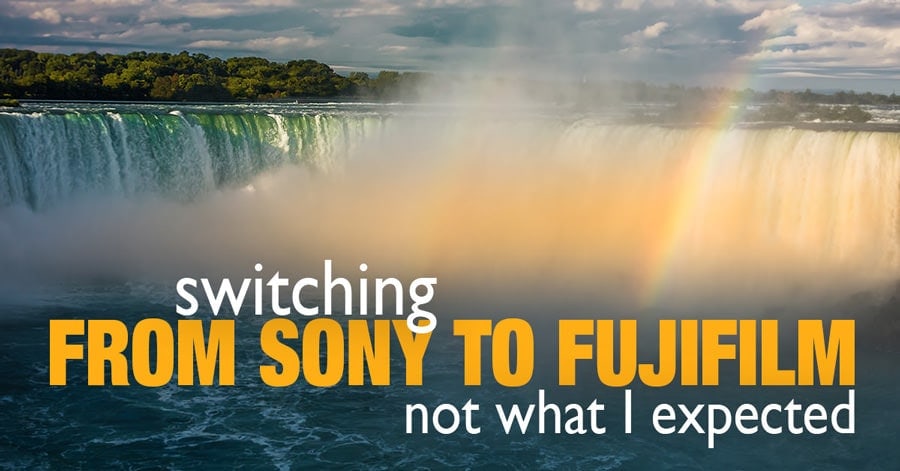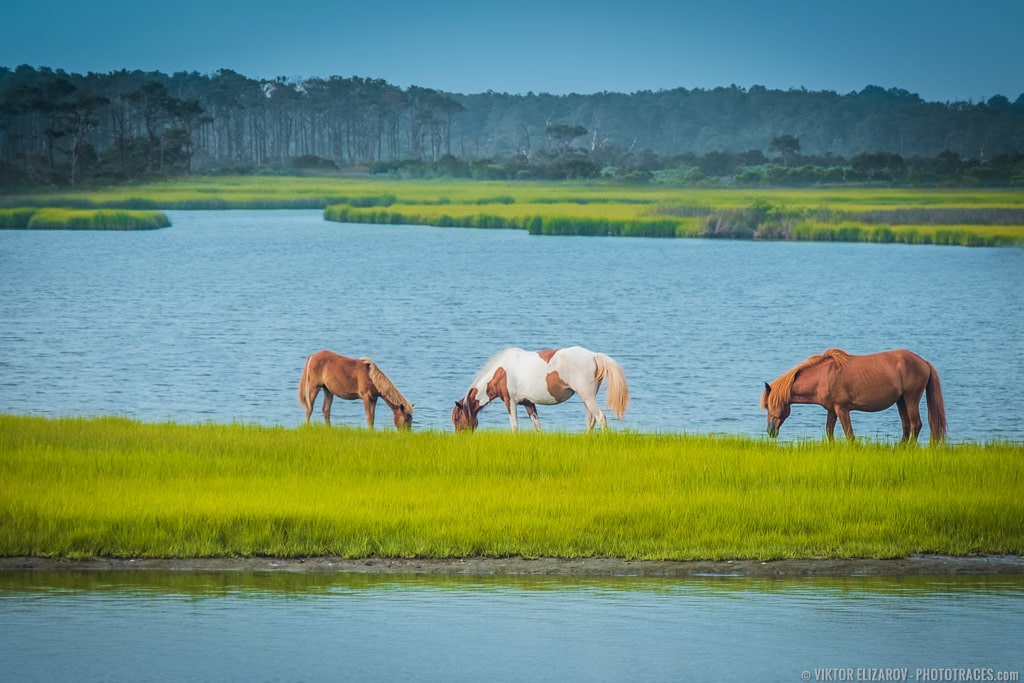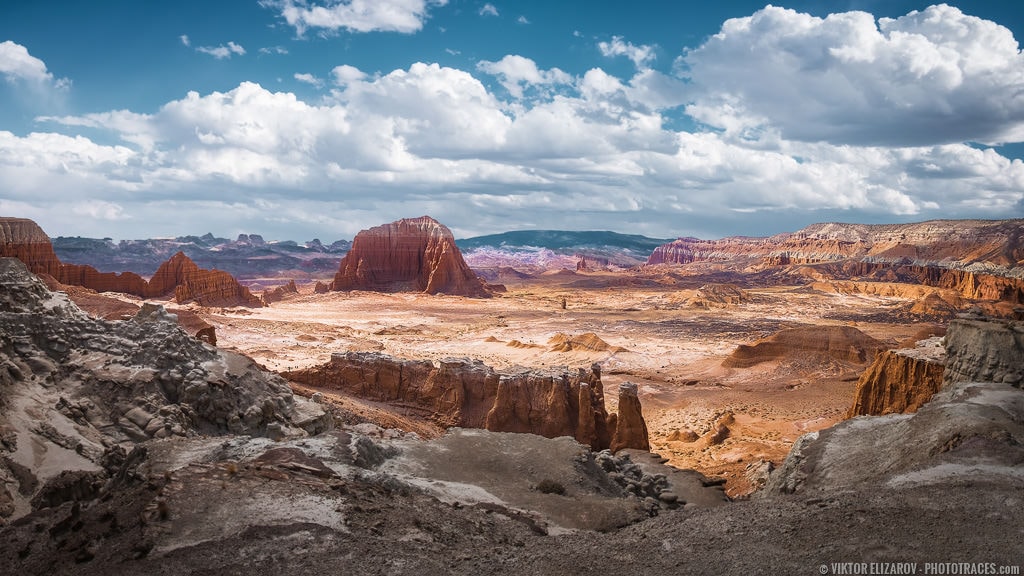It’s been some time since I switched from Sony to Fuji. At this level, I’m prepared to present you my causes for the swap and the way I evaluate Fujifilm vs Sony crop sensor cameras.

First, I need to admit that Fujifilm was not what I anticipated. It really turned out to be solely the other of my expectations. I received enthusiastic about Fujifilm due to the necessity for a greater person expertise, however I stayed with it due to its picture high quality and stellar Fuji lenses.
Let me clarify.
I switched from Canon to Sony 4 years in the past; I had a really completely different motivation. I used to be not solely dissatisfied with Canon however with DSLR know-how on the whole. I used to be wanting to discover the mirrorless realm and didn’t have a selected digital camera model in thoughts. I picked Sony due to the standard of digital information it produced in comparison with Canon.
Sony vs Fujifilm. Causes for Switching
As I thought of the swap this time, I had just one model in thoughts: Fujifilm. Listed here are the principle causes:
1. Consumer Expertise
Whenever you mature as a photographer, you develop a singular pictures routine and habits. You already know precisely what you need to see in a digital camera that’s intently aligned together with your pictures workflow. With Sony, I felt that I couldn’t customise my picture gear how I wished. I hoped combining the streamlined Fuji menu system with the mechanical dials and customizable buttons would provide extra flexibility.
Once I determined to change to Fujifilm, I solely thought of the highest of the road XT2 mannequin, however I had issue discovering dependable opinions. Why? The rationale was due to Fuji’s distinctive strategy to firmware updates.
Since Fujifilm launched its XT2 mannequin in August 2016, it has launched three main firmware updates that reach the digital camera’s performance by including lots of–that’s proper, lots of–of latest and up to date options.
By the tip of 2017, a lot of the preliminary XT2 opinions had been outdated as a result of it was a really completely different digital camera.
Associated: Fuji XT2 vs XT3 – Facet by Facet
I discover Fuji’s strategy to be distinctive and refreshing, making them extra like a software program startup than a shopper electronics firm. It looks like a contemporary strategy to pictures when an organization listens to customers and makes enhancements to present cameras via software program updates.
I wished to be a part of that have.

2. Curiosity
I do know loads of fellow photographers who shoot with Fujifilm and love the Fujifilm expertise. Generally, they reward Fuji a lot that it looks like they’re a part of a cult-like Scientology or CrossFit. I used to be curious to discover the cult-like expertise from the within.
I used to be additionally intrigued to discover the utterly completely different design of Fuji cameras with their numerous mechanical dials and gazillions of customizable buttons.
Additionally, as a photographer and educator, I believed it will be good to be taught one other system so I can intelligently focus on it.
3. Want for the Final Journey Digital camera
For a very long time, I wished the final word journey digital camera setup. I craved for a mixture of a compact climate sealed digital camera and lens.
I used to be additionally searching for a contemporary twin reminiscence card performance that may give me a very redundant backup workflow from begin to end.
And eventually, I wished my journey digital camera to have a dependable and simple GPS tagging performance.
Associated: Prime Equipment for
I couldn’t accomplish every part with Sony.
4. Neglect By Sony
I bear in mind a number of years in the past when somebody from a photograph group predicted that Sony wouldn’t have the bandwidth to develop each full body and APS-C techniques concurrently. This turned out to be true. Sony uncared for the APS-C techniques and concentrated all its efforts on full-frame cameras and lenses. In 4 years, Sony has not created even one APS-C lens.
Fujifilm vs Sony. The Swap
Once I switched from Canon to Sony, probably the most vital change that impacted my pictures was the unimaginable dynamic vary of the Sony sensors. It modified the best way I shoot and edit pictures.
It made me use HDR even much less. And, even when it was completely essential to make the most of HDR, I solely wanted three brackets. The time of taking 5 to seven bracketed photographs was over.
Since then, I at all times take note of the dynamic vary of any digital camera that I consider and make it one of the vital essential paraments of my pictures.
The issue with Fuji is that it makes use of an X-Trans sensor, and evidently nobody can precisely measure its dynamic vary. This made it unimaginable for me to match the dynamic vary of the XT2 to my present Sony earlier than I made the swap.
It fearful me a bit as a result of I didn’t need to sacrifice the dynamic vary in my new digital camera.
So, as a substitute of switching immediately, I made a decision to first take a look at the Fuji. When a neighborhood fellow photographer was promoting his virtually new Fuji X-T2 physique, I knew it was the proper alternative for me to match it to Sony.
I purchased the digital camera and complemented it with the Fujinon 18-135mm lens. Over the subsequent six weeks, I used each the Sony and Fuji techniques aspect by aspect.
Associated: My Fujifilm Journey Pictures Gear
Here’s what I found.

The Positives of Switching from Sony to Fujifilm
Dynamic Vary
The dynamic vary of the Fuji XT2 sensor is unimaginable. I can’t measure it exactly to provide the actual variety of stops it covers however, based mostly on my purely empirical expertise; it’s higher than the Sony a6000, a6300, and a6500. In six weeks, I’ve not used HDR, even when taking pictures straight into the solar. The quantity of element I can get well in highlights and shadows is staggering.
That is one thing I didn’t count on.

Picture High quality
At the moment, I’ve two lenses: Fujinon 10-24 and Fujinon 18-135. The mixture of the Fuji XT2 and the 10-24 or 18-135 produces a lot cleaner and sharper pictures than the Sony a6000 or a65000 with a Sony 16-70 or Sony 10-18. The Fujifilm pictures are completely usable at 100% magnification. Unbelievable.
Fujinon Lenses
It is not uncommon information that Fujifilm lenses are good, and I had a normal thought of what to anticipate.
However, I need to focus on Fujinon 18-135 lens. It isn’t the most well-liked Fuji lens, however I picked it as a part of my final journey pictures setup. It’s climate sealed, and stabilized with a really helpful focal size. I knew prematurely that I may go on an prolonged journey with solely that lens.
After utilizing Fujinon solely for two weeks, I noticed that just about all of the Fujinon 18-135 opinions I learn had been inaccurate and deceptive. Most of them concluded that it’s a first rate lens however you can’t count on a lot from a brilliant zoom lens.
I don’t agree with these conclusions. I discover this lens to be excellent. The picture high quality is superb and when taking pictures at f/8 – f/11 I hardly can inform the distinction between Fujinon 18-135 and everyone’s favourite extremely huge Fujinon 10-24.
The Fujinon 18-135mm has one of the best Optical Stabilization I’ve ever skilled. I managed to shoot at focal size 135mm utilizing shutter velocity 1/10s and produce a wonderfully sharp picture. It’s exceptional.
Digital Viewfinder
The EVF is to die for. It’s HUGE and vivid. It incorporates an infinite quantity of data, and you’ll customise it in any approach you need. It has already modified the best way I take pictures.
I assigned the entrance operate button to set off the Histogram show in EVF. With the newest firmware replace, it shows a mixed histogram plus three extra variations for every shade channel. Now when I’m able to shoot, I press the AE-L button to lock the publicity; subsequent, I activate the histogram within the EVF, and at last, I tweak the publicity by adjusting the publicity compensation utilizing Entrance Command Dial. And I at all times have 4 histograms in EVF to judge my changes.
Find it irresistible.
ISO Efficiency
One of many shortcomings of the Fuji XT2 is taken into account to be not a stellar excessive ISO efficiency. However, as soon as once more, I don’t solely agree with the conclusion. I assume in the event you evaluate XT2 ISO efficiency to a full body sensor digital camera just like the Sony 7r, it is perhaps the case, however I discover the ISO efficiency is superb for the APS-C digital camera. I used to be shocked that at ISO 12800, pictures are nonetheless usable with loads of particulars.
The mixture of wonderful ISO efficiency with improved and prolonged Auto ISO performance permits me to shoot in circumstances I’d by no means think about taking pictures earlier than.

The Negatives of Switching from Sony to Fujifilm
Ergonomics
The day I acquired the digital camera and the lens I went on a day-long journey to shoot winter landscapes. After taking pictures for two hours, I noticed I had cramps in my fingers.
Sony a6000 is a small digital camera, nevertheless it has a beefy, not very deep, however fairly huge grip, and I may comfortably carry the digital camera utilizing my complete palm. However the Fuji XT2 is an even bigger and heavier digital camera with a tiny grip, and I at all times needed to squeeze it with my fingers placing pointless pressure on them.
After 5 minutes of Googling, I noticed the small grip was a typical subject for a lot of Fuji cameras. And naturally, I discovered the answer quick. I ordered the thumb grip, and it virtually mounted the issue.
I additionally purchased a cheap L-Bracket with a steel grip.

Fujifilm XT2 Vertical Shoot Hand Grip
Now once I shoot handheld, I take advantage of a thumb grip solely, and when I’m on a tripod, I additionally connect the L-Bracket Grip.
However, I’m nonetheless not solely comfy. I hope, over time, I’ll get used to it.
I’m an enormous Again Button Focus person, and the AE-L and AF-L buttons are tiny, and it’s onerous to make use of them. I needed to assign Rear Command Dial to lock the concentrate on a press down. It isn’t solely comfy.
Inconsistency with Customization
I just like the Fuji XT2 design and mechanical dials, however I anticipated to have the flexibility to assign all mechanical dial functionalities to customizable operate buttons. That’s not the case.
For instance, I can use Entrance Command Dial to regulate publicity compensation by setting the mechanical dial to the S choice, and I prefer it quite a bit.
However, I cannot assign Drive choice to a customized operate button or perhaps a Fast menu. The one approach for me to vary from single mode taking pictures to bracketing, which I do quite a bit, is to make use of a mechanical subdial underneath the ISO dial. I’ve to make use of my second hand to vary it.
The identical goes for the Metering choice; it’s important to use a mechanical dial and no operate button or Fast Menu choices.
When taking pictures in Aperture Precedence mode, the one option to change the aperture worth is to make use of a lens aperture ring. It is vitally comfy when taking pictures handheld, however when on a tripod, as soon as once more, it requires a second hand. There isn’t any option to change the aperture utilizing the Rear Command dial.
I hope that in future updates, Fujifilm offers us the flexibility to assign any operate to any operate buttons or at the least to a Fast Menu. I’d love to have the ability to customise the XT2 so I can change any settings with one hand and with out shifting the attention away from EVF
Customized Setting
I discover that one of the vital helpful customized configurations on any digital camera model is the flexibility to save lots of a bunch of customized settings and recall them with one click on. I used it on Sony and Canon.
I used to be enthusiastic about Fujifilm customized settings as a result of I knew you might save as much as 7 customized configurations, plus you might give every configuration a singular title. And it’s simple to recall every saved configuration from Fast Menu.
However once I began to customise it I noticed the one following settings an out there for reminiscence recall:
Dynamic Vary, Movie Simulation, Grain Impact, White Stability, Shade Sharpness, Spotlight Tone, and Noise Discount.
That’s is correct, all of them associated to JPEG taking pictures. And since I solely shoot RAW, the complete Customized Setting module is completely ineffective to me.
I discover it to be one of the vital shocking shortcomings of Fujifilm Xt2 performance.
Fujifilm vs Sony: Conclusion
As I discussed earlier than, the swap from Sony to Fujifilm turned out to be not what I anticipated in any respect. I received enthusiastic about Fujifilm due to the necessity for a greater person expertise and extra superior customization, however I stayed with it due to its picture high quality, dynamic vary, and stellar lenses.
I don’t complain and haven’t any regrets. I’ve already bought all my Sony gear and will certainly keep on with Fujifilm for a 12 months at the least, however I think it is going to be longer.
And I’m having a blast studying the brand new digital camera system. Plus, Fujifilm retains us on the toes with the fixed firmware upgrades.
Additionally, it proved once more there isn’t any such factor as an ideal digital camera.

Fujifilm vs Sony (Replace)
It’s been virtually 18 months since I switched from Sony to the Fujifilm digital camera system. I made a decision to present you a fast replace.
Initially, I’ve grown even fonder of Fujifilm gear over time. I like its aesthetics, the standard of substances, and the standard of pictures Fujifilm produces. Plus, I like Fujifilm’s photographer-centric strategy to enterprise.
At this level, I’ve no plans to search for another. I’ll keep on with Fujifilm.
I nonetheless shoot with the Fujifilm X-t2. In 2018, I used to be very excited when Fujifilm introduced the X-t3, and I used to be wanting to improve. However once I checked the specs of the X-t3, I noticed there was nothing for me there.
The Fujifilm X-T3 affords drastic enhancements in video specs and autofocus, neither of which I take care of a lot. The options I cared about probably the most—picture high quality dynamic vary and low mild efficiency – didn’t change within the X-T3 mannequin.
I additionally hoped the X-T3 would introduce an even bigger battery to get rid of the necessity to carry a pile of spare batteries together with me. This didn’t occur.
Fujinon 35mm f/1.4
I added a brand new Fujifilm lens to my assortment. I bought the Fujinon 35mm f/1.4, which acts because the “nifty fifty” on APS-C sensor cameras. The lens is among the oldest fashions within the Fujifilm line and has a really previous autofocus motor. The autofocus is noisy and never very quick, however the lens produces unimaginable pictures with distinctive appears.
In response to Fujifilm’s chief engineer, after they designed the Fujinon 35mm f/1.4 lens, they’d the choice to make it optically good or make it distinctive and distinctive. They selected the latter. It’s now one in every of my favourite lenses I’ve ever owned. Plus, it’s tiny and extremely mild.

My working horse is the Fujinon 10-24mm f/4 wide-angle lens. I take advantage of it for many of my panorama pictures. Its solely weak spot is its lack of climate sealing. When I’m within the discipline within the rain, I’ve to change to the Fujinon 18-135mm. This lens is weather-sealed and offers me a really helpful attain of 135mm (200m full-frame equal).
The Fujifilm 18-135mm is nearly the proper lens for my wants, nevertheless it has one shortcoming. It’s too large and heavy for lengthy and demanding hikes. Not too long ago, Fujifilm introduced a brand new lens—the 16-80mm f/4 —that’s smaller than the 18-135mm lens, has one of the best picture stabilization within the trade, and is climate sealed. It has the potential to be the final word journey lens. I completely plan to test it out when it turns into out there.
That’s it for now. Let me know in case you have any questions within the feedback under. I’m completely happy to reply any of your inquiries.




